#indigenous peoples
Text
"In a historic “first-of-its-kind” agreement the government of British Colombia has acknowledged the aboriginal ownership of 200 islands off the west coast of Canada.
The owners are the Haida nation, and rather than the Canadian government giving something to a First Nation, the agreement admits that the “Xhaaidlagha Gwaayaai” or the “islands at the end of world,” always belonged to them, a subtle yet powerful difference in the wording of First Nations negotiating.
BC Premier David Eby called the treaty “long overdue” and once signed, will clear the way for half a million hectares (1.3 million acres) of land to be managed by the Haida.
Postal service, shipping lanes, school and community services, private property rights, and local government jurisdiction, will all be unaffected by the agreement, which will essentially outline that the Haida decide what to do with the 200 or so islands and islets.
“We could be facing each other in a courtroom, we could have been fighting each other for years and years, but we chose a different path,” said Minister of Indigenous Relations of BC, Murray Rankin at the signing ceremony, who added that it took creativity and courage to “create a better world for our children.”
Indeed, making the agreement outside the courts of the formal treaty process reflects a vastly different way of negotiating than has been the norm for Canada.
“This agreement won’t only raise all boats here on Haida Gwaii – increase opportunity and prosperity for the Haida people and for the whole community and for the whole province – but it will also be an example and another way for nations – not just in British Columbia, but right across Canada – to have their title recognized,” said Eby.
In other words, by deciding this outside court, Eby and the province of BC hope to set a new standard for how such land title agreements are struck."
-via Good News Network, April 18, 2024
#canada#indigenous#first nations#haida#british columbia#canadian politics#land back#indigenous peoples#indigenous rights#indigenous land
17K notes
·
View notes
Text
Genocide experts warn that India is about to genocide the Shompen people
Who are the Shompen?
The Shompen are an indigenous culture that lives in the Great Nicobar Island, which is nowadays owned by India. The Shompen and their ancestors are believed to have been living in this island for around 10,000 years. Like other tribes in the nearby islands, the Shompen are isolated from the rest of the world, as they chose to be left alone, with the exception of a few members who occasionally take part in exchanges with foreigners and go on quarantine before returning to their tribe. There are between 100 and 400 Shompen people, who are hunter-gatherers and nomadic agricultors and rely on their island's rainforest for survival.

Why is there risk of genocide?
India has announced a huge construction mega-project that will completely change the Great Nicobar Island to turn it into "the Hong Kong of India".
Nowadays, the island has 8,500 inhabitants, and over 95% of its surface is made up of national parks, protected forests and tribal reserve areas. Much of the island is covered by the Great Nicobar Biosphere Reserve, described by UNESCO as covering “unique and threatened tropical evergreen forest ecosystems. It is home to very rich ecosystems, including 650 species of angiosperms, ferns, gymnosperms, and bryophytes, among others. In terms of fauna, there are over 1800 species, some of which are endemic to this area. It has one of the best-preserved tropical rain forests in the world.”
The Indian project aims to destroy this natural environment to create an international shipping terminal with the capacity to handle 14.2 million TEUs (unit of cargo capacity), an international airport that will handle a peak hour traffic of 4,000 passengers and that will be used as a joint civilian-military airport under the control of the Indian Navy, a gas and solar power plant, a military base, an industrial park, and townships aimed at bringing in tourism, including commercial, industrial and residential zones as well as other tourism-related activities.
This project means the destruction of the island's pristine rainforests, as it involves cutting down over 852,000 trees and endangers the local fauna such as leatherback turtles, saltwater crocodiles, Nicobar crab-eating macaque and migratory birds. The erosion resulting from deforestation will be huge in this highly-seismic area. Experts also warn about the effects that this project will have on local flora and fauna as a result of pollution from the terminal project, coastal surface runoff, ballasts from ships, physical collisions with ships, coastal construction, oil spills, etc.
The indigenous people are not only affected because their environment and food source will be destroyed. On top of this, the demographic change will be a catastrophe for them. After the creation of this project, the Great Nicobar Island -which now has 8,500 inhabitants- will receive a population of 650,000 settlers. Remember that the Shompen and Nicobarese people who live on this island are isolated, which means they do not have an immune system that can resist outsider illnesses. Academics believe they could die of disease if they come in contact with outsiders (think of the arrival of Europeans to the Americas after Christopher Columbus and the way that common European illnesses were lethal for indigenous Americans with no immunization against them).
And on top of all of this, the project might destroy the environment and the indigenous people just to turn out to be useless and sooner or later be abandoned. The naturalist Uday Mondal explains that “after all the destruction, the financial viability of the project remains questionable as all the construction material will have to be shipped to this remote island and it will have to compete with already well-established ports.” However, this project is important to India because they want to use the island as a military and commercial post to stop China's expansion in the region, since the Nicobar islands are located on one of the world's busiest sea routes.
Last year, 70 former government officials and ambassadors wrote to the Indian president saying the project would “virtually destroy the unique ecology of this island and the habitat of vulnerable tribal groups”. India's response has been to say that the indigenous tribes will be relocated "if needed", but that doesn't solve the problem. As a spokesperson for human rights group Survival International said: “The Shompen are nomadic and have clearly defined territories. Four of their semi-permanent settlements are set to be directly devastated by the project, along with their southern hunting and foraging territories. The Shompen will undoubtedly try to move away from the area destroyed, but there will be little space for them to go. To avoid a genocide, this deadly mega-project must be scrapped.”
On 7 February 2024, 39 scholars from 13 countries published an open letter to the Indian president warning that “If the project goes ahead, even in a limited form, we believe it will be a death sentence for the Shompen, tantamount to the international crime of genocide.”
How to help
The NGO Survival International has launched this campaign:
From this site, you just need to add your name and email and you will send an email to India's Tribal Affairs Minister and to the companies currently vying to build the first stage of the project.
Share it with your friends and acquittances and on social media.
Sources:
India’s plan for untouched Nicobar isles will be ‘death sentence’ for isolated tribe, 7 Feb 2024. The Guardian.
‘It will destroy them’: Indian mega-development could cause ‘genocide’ and ‘ecocide’, says charity, 8 Feb 2024. Geographical.
Genocide experts call on India's government to scrap the Great Nicobar mega-project, Feb 2024. Survival International.
The container terminal that could sink the Great Nicobar Island, 20 July 2022. Mongabay.
[Maps] Environmental path cleared for Great Nicobar mega project, 10 Oct 2022. Mongabay.
#shompen#genocide#stop genocide#india#indigenous#indigenous peoples#indigenous rights#human rights#anthropology#stateless nations#end occupation#andaman and nicobar islands#nicobar islands#great nicobar#💬#asia#geopolitics#ecocide#sustainability
22K notes
·
View notes
Text

From Levantine_gay on insta
#arab imperialism#arab colonialism#jumblr#i stand with israel#say no to settler colonialism#colonization#colonialism#indigenous peoples#first nations#israel#assyria#kurdistan#imazighen#indigenous swana
3K notes
·
View notes
Text
A Mi'kmaq pal of mine shared these on FB so I'm sharing them here, too! While many Indigenous languages have died out over the centuries due to colonization efforts, those that have survived are being spoken by our elders and passed down to our youth. As someone who grew up alienated from their own culture due to those very same colonization efforts, it's been a bittersweet experience to reconnect with my culture and ancestry over the past decade. I'm so thankful for the greater Mi'kmaq community giving me the opportunity to make these connections again through the active efforts of preserving our language.











Wela'lin, kesalul <3
2K notes
·
View notes
Text
For thousands of years, Kettle Falls was a vital salmon fishing ground for the Sinixt, but early 20th-century dam construction blocked salmon migration.
Wrongfully declared extinct in Canada in 1956, the Sinixt fought for recognition and were officially acknowledged as Aboriginal Peoples of Canada in 2021.
In 2023, the U.S. government signed a $200 million agreement with a coalition of tribes, including the Sinixt, to fund an Indigenous-led salmon reintroduction program into the Columbia River system above dams in Washington.
Sinixt leaders say this project is an important effort to help right a historical wrong in the legacy that led to their “extinction” status, while many hope to one day join salmon efforts on their traditional territory in Canada.
#good news#environmentalism#sinixt#canada#usa#indigenous#indigenous peoples#indigenous activism#colonialism#science#environment#animals#fosh#salmon#rivers#indigenous rights#respect the treaties#aboriginal people
985 notes
·
View notes
Text
GUYS THIS IS....SO FUCKING IMPORTANT



this is so...it's so overdue but the amount of IMPACT this would have i am so,,,i am weeping at this. deb haaland the work that you're doing is incredible and you've been my hero for years but my GOD i would die for you
$23 BILLION YOU GUYS. DO YOU KNOW THE CHANGE THAT WOULD MAKE. DO YOU KNOW WHAT THAT COULD DO FOR PEOPLE

THIS WOULD CHANGE THE WHOLE FUCKING GAME HOLY SHIT
#indigenous peoples#united states#native american#deb haaland#residential schools#reparations#news#WHY AM I NOT SEEING MORE PEOPLE TALKING ABOUT THIS
453 notes
·
View notes
Text
1K notes
·
View notes
Text

A little peek at my Northern Traditional powwow regalia! Made some updates to my outfit recently :)
596 notes
·
View notes
Text
Skipping ALL things in my queue, and all the asks in my ask box, to tell y'all about THIS that came out a few hours ago. I cannot express how excited I am about this information finally being published.
Its not the first evidence of pottery technologies found in Australia, but the artefacts that have been found at the Lizard Island group in the past havent necessarily been datable. Evidence of pottery in the Torres Strait was also found in the early 2000s, and its been analysed to be evidence of trade with Papua New Guinea (who have an AMAZING history of pottery technology).
To our amazement, around 40cm below the surface we began to find pieces of pottery among the shells in the excavation. We knew this was a big deal. We carefully bagged each piece of pottery and mapped where each sherd came from, and kept digging.
But as of now, there's officially dated evidence for locally made pottery in Australia, of at least 1800 years. Not only outside the Torres Straight, but 300km south. Not only 1800+ years old, but also pre-dating the original known dates for Torres Straight Islands pottery, suggesting the possibility of even earlier pottery technology trade with PNG. AND ITS DECORATED.
Radiocarbon dating of charcoal and shells found close to the pottery shows that it is between 2,950 and 1,815 years old, making it the earliest securely dated pottery ever found in Australia. Analysis of the clays and tempers shows that all of the pottery was likely made on Jiigurru.
The pottery stopped at about 80cm depth, with 82 pieces of pottery in total. Most are very small, with an average length of just 18 millimetres. The pottery assemblage includes rim and neck pieces and some of the pottery is decorated with pigment and incised lines.
#GUYS IM SO EXCITED#IVE BEEN WAITING FOR THIS#archaeology#australia#Aboriginal and Torres Strait Islander peoples#this is literally SO huge#they let a mouse do archaeology?#Indigenous peoples
610 notes
·
View notes
Text
"The Yurok will be the first Tribal nation to co-manage land with the National Park Service under a historic memorandum of understanding signed on Tuesday [March 19, 2024] by the tribe, Redwood national and state parks, and the non-profit Save the Redwoods League, according to news reports.
The Yurok tribe has seen a wave of successes in recent years, successfully campaigning for the removal of a series of dams on the Klamath River, where salmon once ran up to their territory, and with the signing of a new memorandum of understanding, the Yurok are set to reclaim more of what was theirs.
Save the Redwoods League bought a property containing these remarkable trees in 2013, and began working with the tribe to restore it, planting 50,000 native plants in the process. The location was within lands the Yurok once owned but were taken during the Gold Rush period.
Centuries passed, and by the time it was purchased it had been used as a lumber operation for 50 years, and the nearby Prairie Creek where the Yurok once harvested salmon had been buried.
Currently located on the fringe of Redwoods National and State Parks which receive over 1 million visitors every year and is a UNESCO Natural Heritage Site, the property has been renamed ‘O Rew, a Yurok word for the area.
“Today we acknowledge and celebrate the opportunity to return Indigenous guardianship to ‘O Rew and reimagine how millions of visitors from around the world experience the redwoods,” said Sam Hodder, president and CEO of Save the Redwoods League.
Having restored Prarie Creek and filled it with chinook and coho salmon, red-legged frogs, northwestern salamanders, waterfowl, and other species, the tribe has said they will build a traditional village site to showcase their culture, including redwood-plank huts, a sweat house, and a museum to contain many of the tribal artifacts they’ve recovered from museum collections.
Believing the giant trees sacred, they only use fallen trees to build their lodges.
“As the original stewards of this land, we look forward to working together with the Redwood national and state parks to manage it,” said Rosie Clayburn, the tribe’s cultural resources director.
It will add an additional mile of trails to the park system, and connect them with popular redwood groves as well as new interactive exhibits.
“This is a first-of-its-kind arrangement, where Tribal land is co-stewarded with a national park as its gateway to millions of visitors. This action will deepen the relationship between Tribes and the National Park Service,” said Redwoods National Park Superintendent Steve Mietz, adding that it would “heal the land while healing the relationships among all the people who inhabit this magnificent forest.”"
-via Good News Network, March 25, 2024
#indigenous#land back#indigenous issues#first nations#native american#indigenous peoples#yurok#yurok tribe#national parks service#national park#redwoods#california#trees#trees and forests#united states#good news#hope#indigenous land
5K notes
·
View notes
Text
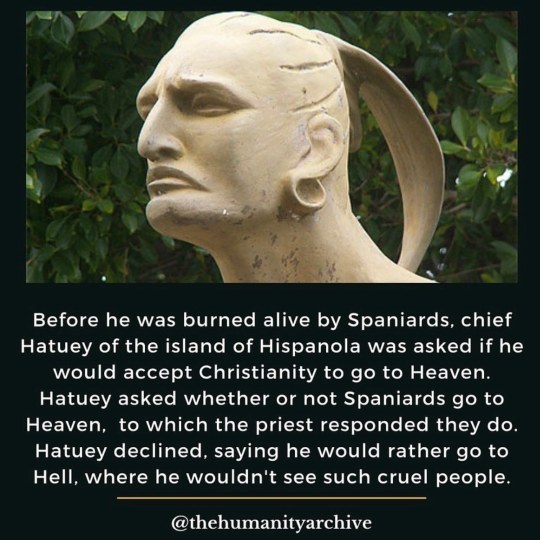
#chief hatuey#hispaniola#spaniards#christianity#heaven#hell#colonization#resistance#indigenous peoples#colonialism#imperial expansion#conquest#settlement#exploitation#indigenous displacement#cultural assimilation
483 notes
·
View notes
Text

711 notes
·
View notes
Text
Indigenous here is a political designation which describes a people groups relationship with colonialism - ie. Saami people are an indigenous group but Finnish/Swedish/Norwegian/Russian people are not, even though they are both genetically from the same countries- because of the groups different relationships with colonialism.
We ask your questions so you don’t have to! Submit your questions to have them posted anonymously as polls.
#polls#incognito polls#anonymous#tumblr polls#tumblr users#questions#polls about the world#submitted dec 18#demographics#indigenous#indigenous peoples#first nations#geography#ancestry
360 notes
·
View notes
Text
The Tolowa Dee-ni’ Nation, Resighini Rancheria, and Cher-Ae Heights Indian Community designated the first ever Indigenous Marine Stewardship Area (IMSA) in the U.S. along the northern California coast.
The tribes plan to steward nearly 700 mi2 (1,800 km2) of their ancestral ocean and coastal territories from the California-Oregon border to Little River near the town of Trinidad, California.
As sovereign nations, the tribes say they’re not seeking state or federal agencies’ permission to assert tribally led stewardship rights and responsibilities; rather, they want to establish cooperative relationships recognizing their inherent Indigenous governance authority.
The tribes aim to restore traditional ecological knowledge and management practices that sustained the area’s natural abundance before colonial disruption.
#!!!!#good news#science#environmentalism#nature#environment#animals#conservation#indigenous people#california#stewardship#indigenous peoples#usa#climate change
2K notes
·
View notes
Text
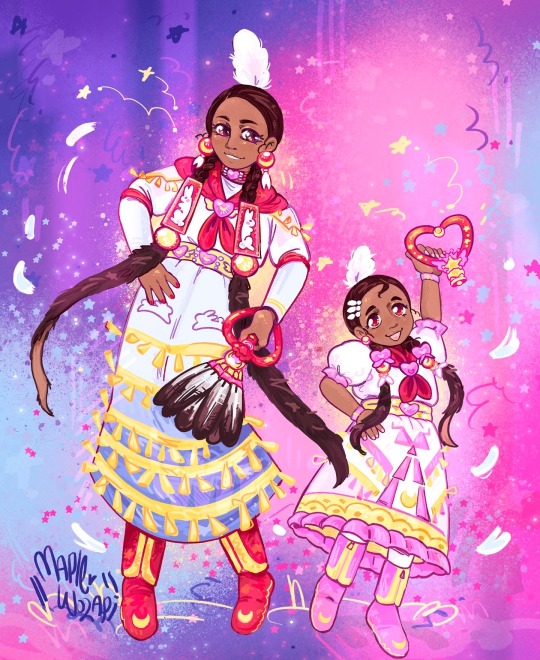



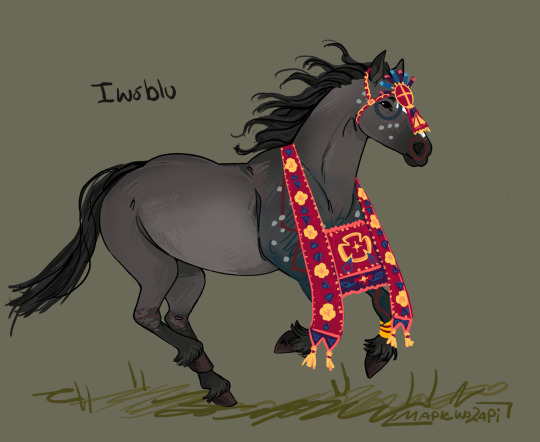
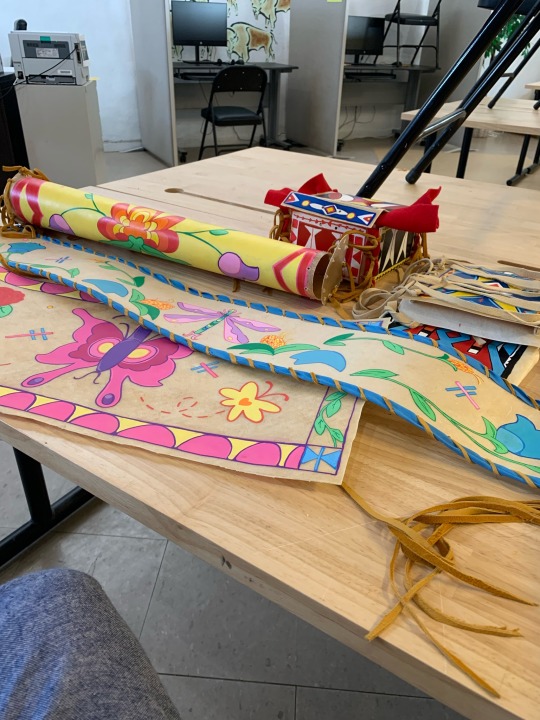


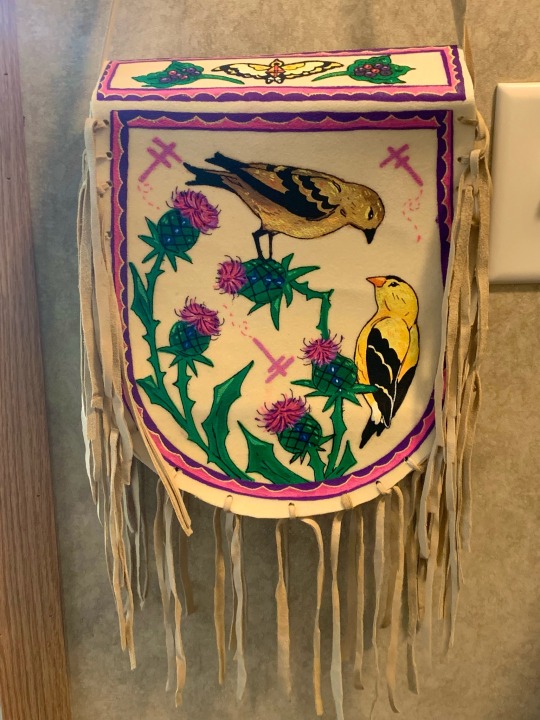

It’s indigenous peoples day hurryay, I love being who I am and making my art. I could be indigenous all day 😝🍇🍓🩷 I love being Arikara and I love being Lakota 💖🩷💗
1K notes
·
View notes
